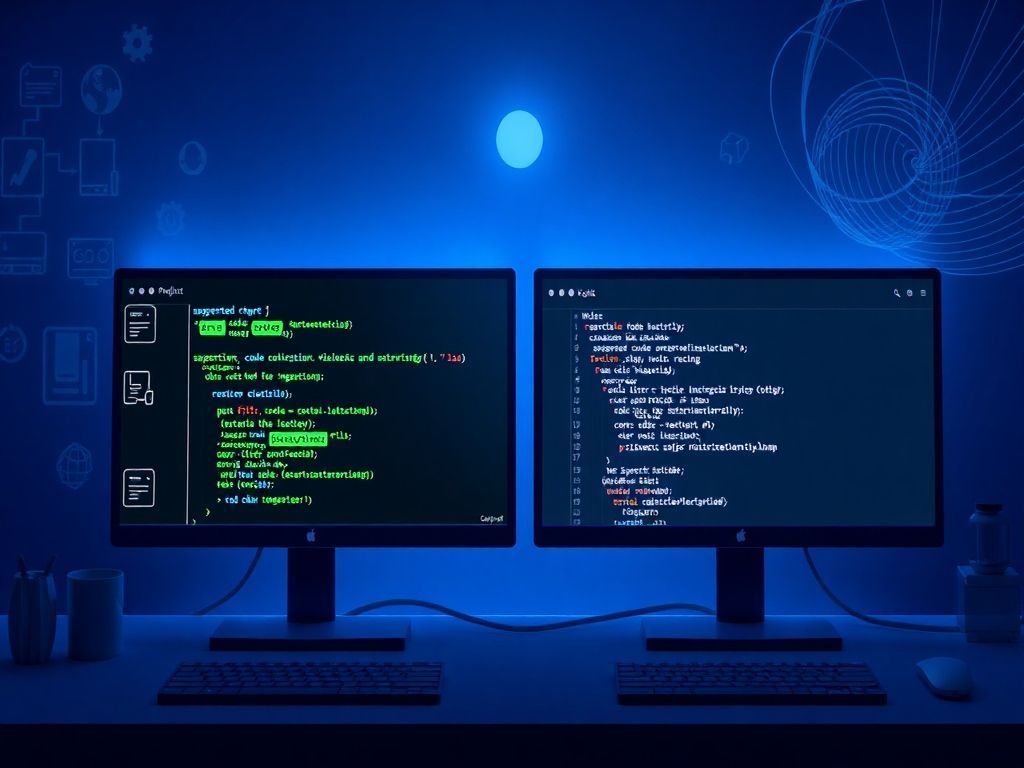Writing clean, maintainable code is crucial for any software developer. This article provides practical tips for improving your coding practices, making your projects easier to manage and debug. Learn how to write code that’s not only functional but also future-proof and efficient.
Tip Lập Trình for Maintainable Code
Writing clean, readable code is absolutely fundamental for effective *phát triển phần mềm*. It directly impacts the long-term success and maintainability of any software project. When code is difficult to understand, it becomes a breeding ground for bugs, increases the time required for debugging, and makes future modifications a nightmare. In essence, prioritizing readability is a key aspect of *tip lập trình* that pays dividends down the line.
One of the most crucial aspects of writing maintainable code revolves around consistent and meaningful variable naming. Avoid using single-letter variable names (except for loop counters) or cryptic abbreviations. Instead, opt for descriptive names that clearly indicate the variable’s purpose. For instance, instead of `x`, use `customerAge` or `numberOfProducts`. This simple practice significantly enhances code readability and reduces the mental effort required to understand the code’s functionality.
Consider these examples:
Bad:
“`c++
int a = 10;
int b = 20;
int c = a + b;
“`
Good:
“`c++
int customerAge = 10;
int productQuantity = 20;
int totalAmount = customerAge + productQuantity;
“`
The “good” example immediately conveys the meaning of each variable, making the code much easier to grasp. This is a simple yet powerful *tip lập trình*.
Code formatting is another essential element of maintainable code. Consistent indentation, spacing, and line breaks dramatically improve readability. Adhere to a consistent style guide (e.g., Google Style Guide, PEP 8 for Python) within your project. Most code editors offer automatic formatting tools that can help enforce these standards.
Consider this poorly formatted code:
“`java
public class Example{public static void main(String[]args){int x=1;if(x>0){System.out.println(“Positive”);}}}
“`
Now, compare it to the properly formatted version:
“`java
public class Example {
public static void main(String[] args) {
int x = 1;
if (x > 0) {
System.out.println(“Positive”);
}
}
}
“`
The properly formatted code is much easier to read and understand. Consistent formatting highlights the code’s structure and logic, making it easier to identify potential errors. This is particularly important for *code dễ duy trì*, as it allows developers to quickly understand and modify the code.
Commenting is also a vital practice for improving code maintainability. Comments should explain the *why* behind the code, not just the *what*. Avoid stating the obvious; instead, focus on providing context, explaining complex algorithms, and documenting assumptions. Keep comments concise and up-to-date. Stale or misleading comments can be worse than no comments at all.
Here’s an example:
Bad:
“`python
x = x + 1 # Increment x
“`
Good:
“`python
x = x + 1 # Increment the counter to track the number of processed items
“`
The “good” comment provides valuable context about the purpose of the increment operation. This is invaluable for *phát triển phần mềm* where multiple developers might be working on the same codebase.
By embracing these best practices – meaningful variable naming, consistent code formatting, and effective commenting – you can significantly improve the maintainability of your code and reduce debugging time. Remember, writing clean, readable code is not just about making your code look pretty; it’s about making it easier to understand, modify, and debug, ultimately contributing to the long-term success of your software projects. These *tip lập trình* are essential for professional software development.
Leading on from these foundational aspects, the next chapter will delve into structuring techniques.
Code Dễ Duy trì: Structuring for Maintainability
Code Dễ Duy trì: Structuring for Maintainability
Building upon the principles of clean and readable code discussed in the previous chapter – including best practices for variable naming, code formatting, and commenting – we now delve into the crucial aspect of code structuring. Proper code structure is paramount for achieving long-term maintainability in *Phát triển phần mềm*. Without a well-defined structure, even the cleanest code can become a tangled mess over time, making it difficult to understand, modify, and debug. This chapter explores various code structuring techniques that promote maintainability, focusing on modular design, functions, and classes.
One of the most effective strategies for creating code dễ duy trì is **modular design**. Modular design involves breaking down a large, complex system into smaller, independent, and reusable modules. Each module should have a specific, well-defined purpose and should interact with other modules through well-defined interfaces. This approach offers several advantages:
- Reduced Complexity: By dividing the system into smaller, manageable units, modular design reduces the overall complexity of the code. This makes it easier to understand and reason about each part of the system.
- Increased Reusability: Modules can be reused in different parts of the application or even in different projects. This saves time and effort and promotes consistency.
- Improved Testability: Individual modules can be tested independently, making it easier to identify and fix bugs.
- Enhanced Maintainability: Changes to one module are less likely to affect other modules, making it easier to maintain and update the code.
Functions and classes are fundamental building blocks for implementing modular design. Functions encapsulate specific tasks or operations, while classes encapsulate data and behavior related to a particular entity or concept.
Functions are essential for breaking down complex tasks into smaller, more manageable units. A function should perform a single, well-defined task and should have a clear input and output. When writing functions, consider the following:
- Function Name: Choose a descriptive name that accurately reflects the function’s purpose.
- Function Size: Keep functions relatively small and focused. A good rule of thumb is that a function should not exceed 50-100 lines of code.
- Function Arguments: Minimize the number of arguments a function takes. Too many arguments can make the function difficult to use and understand.
- Return Values: Ensure that the function returns a meaningful value that can be used by the calling code.
Classes provide a powerful mechanism for organizing code and data around specific entities or concepts. A class encapsulates data (attributes) and behavior (methods) related to that entity. When designing classes, consider the following:
- Class Name: Choose a descriptive name that accurately reflects the class’s purpose.
- Class Responsibilities: Define the responsibilities of the class clearly. A class should have a single, well-defined purpose.
- Class Relationships: Consider how the class interacts with other classes in the system. Use inheritance and composition to model relationships between classes.
- Encapsulation: Protect the internal state of the class by using access modifiers (e.g., private, protected) to control access to attributes and methods.
Here’s a simple example illustrating how to break down a complex task into smaller, manageable units using functions in Python:
“`python
def calculate_area(length, width):
“””Calculates the area of a rectangle.”””
return length * width
def print_rectangle_details(length, width):
“””Prints the details of a rectangle.”””
area = calculate_area(length, width)
print(f”Rectangle: Length = {length}, Width = {width}, Area = {area}”)
# Example usage
print_rectangle_details(5, 10)
“`
In this example, the `calculate_area` function encapsulates the task of calculating the area of a rectangle, while the `print_rectangle_details` function encapsulates the task of printing the details of a rectangle. This separation of concerns makes the code easier to understand and maintain. This is a crucial tip lập trình.
By adopting these code structuring techniques, you can significantly improve the maintainability of your software projects. Remember that code dễ duy trì is not just about writing clean code; it’s also about organizing your code in a way that makes it easy to understand, modify, and extend.
Building upon these principles of structuring for maintainability, the next chapter will explore the importance of version control systems and documentation in ensuring the long-term health and maintainability of your *Phát triển phần mềm* projects.
Phát triển phần mềm: Building Maintainable Projects
Following our discussion on structuring code for maintainability, specifically focusing on modular design, functions, and classes, it’s crucial to address the practical aspects of managing and ensuring the long-term health of a software project. As we build upon the principles of *Code dễ duy trì*, this chapter will delve into the importance of version control, effective documentation, and robust testing and debugging strategies. These elements are fundamental for collaborative *phát triển phần mềm* and ensuring the longevity and adaptability of your codebase.
One of the most critical tools in modern software development is a version control system (VCS), with Git being the dominant choice. Git allows developers to track every change made to the codebase, providing a complete history of the project. This is invaluable for several reasons:
- Collaboration: Git enables multiple developers to work on the same project simultaneously without overwriting each other’s changes. Branches allow for isolated development of new features or bug fixes, which can then be merged back into the main codebase.
- Tracking Changes: Every commit to Git includes a message describing the changes made. This provides a clear audit trail, making it easy to understand why specific modifications were implemented.
- Reverting to Previous States: If a new feature introduces bugs or breaks existing functionality, Git allows you to easily revert to a previous, stable version of the code. This “undo” functionality is a lifesaver when things go wrong.
- Experimentation: Developers can freely experiment with new ideas and approaches without fear of permanently damaging the codebase. Branches provide a safe space to explore different solutions.
Beyond just tracking changes, Git fosters collaboration and allows for a more structured approach to *Tip lập trình*. By using branching strategies like Gitflow, teams can manage releases, hotfixes, and feature development in a predictable and organized manner.
Effective documentation is another cornerstone of maintainable software. Code that is well-documented is easier to understand, modify, and debug. There are several levels of documentation that should be considered:
- Inline Comments: Comments within the code itself explain the purpose of specific sections, complex algorithms, or non-obvious logic. Keep comments concise and focused on explaining the *why*, not just the *what*.
- API Documentation: For libraries or modules that are intended to be used by other developers, clear and comprehensive API documentation is essential. Tools like Javadoc (for Java), Sphinx (for Python), and similar tools for other languages can automatically generate documentation from specially formatted comments in the code.
- Design Documents: High-level documents that describe the overall architecture of the system, the rationale behind design decisions, and the interactions between different components.
- User Manuals: Documents that explain how to use the software from the perspective of the end-user.
Remember, documentation is not a one-time task. It should be updated regularly as the code evolves. Outdated or inaccurate documentation can be more harmful than no documentation at all. The aim is to make the *Code dễ duy trì* by reducing the cognitive load for anyone working on the project.
Finally, rigorous testing and debugging are crucial for ensuring code quality and reducing errors. A comprehensive testing strategy should include:
- Unit Tests: Tests that verify the correctness of individual functions, classes, or modules. Unit tests should be automated and run frequently.
- Integration Tests: Tests that verify the interactions between different components of the system.
- System Tests: Tests that verify the overall functionality of the system as a whole.
- User Acceptance Tests (UAT): Tests that are performed by end-users to ensure that the software meets their requirements.
Debugging is an inevitable part of software development. Effective debugging requires a systematic approach:
- Reproduce the Bug: The first step is to consistently reproduce the bug so that you can observe its behavior.
- Isolate the Problem: Narrow down the source of the bug by systematically eliminating possible causes. Use debugging tools to step through the code and examine variables.
- Fix the Bug: Once you have identified the cause of the bug, implement a fix and verify that it resolves the issue.
- Write a Test: Write a unit test that specifically targets the bug. This will help prevent the bug from recurring in the future.
By embracing version control, prioritizing documentation, and implementing robust testing and debugging practices, you can significantly improve the maintainability of your software projects and contribute to successful *phát triển phần mềm*. This ensures that your code remains adaptable, understandable, and valuable over time.
Conclusions
By following these tips, you can significantly improve the maintainability of your code, leading to more efficient development and reduced debugging time. Invest in these practices for a smoother development workflow and higher-quality projects.











